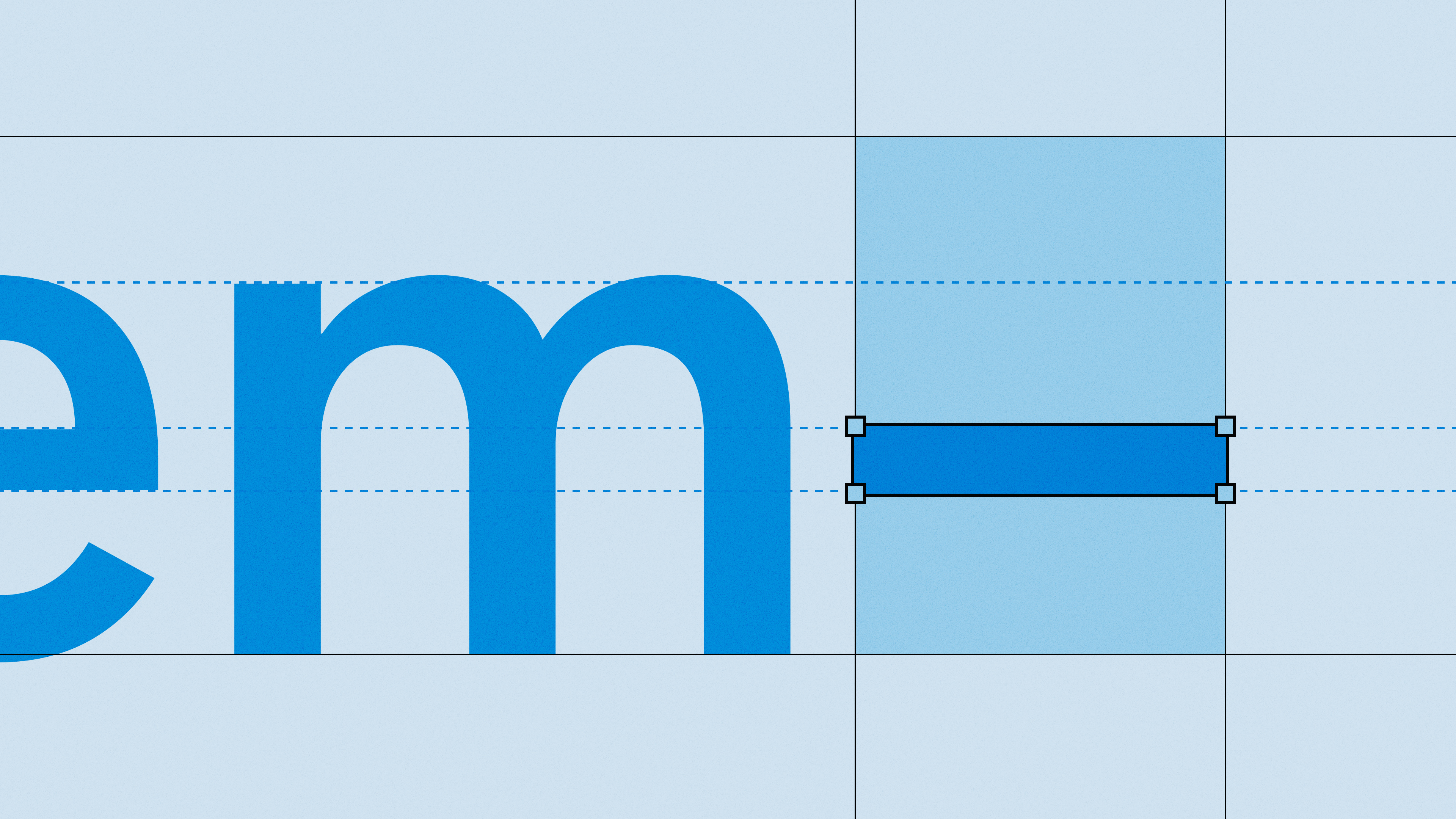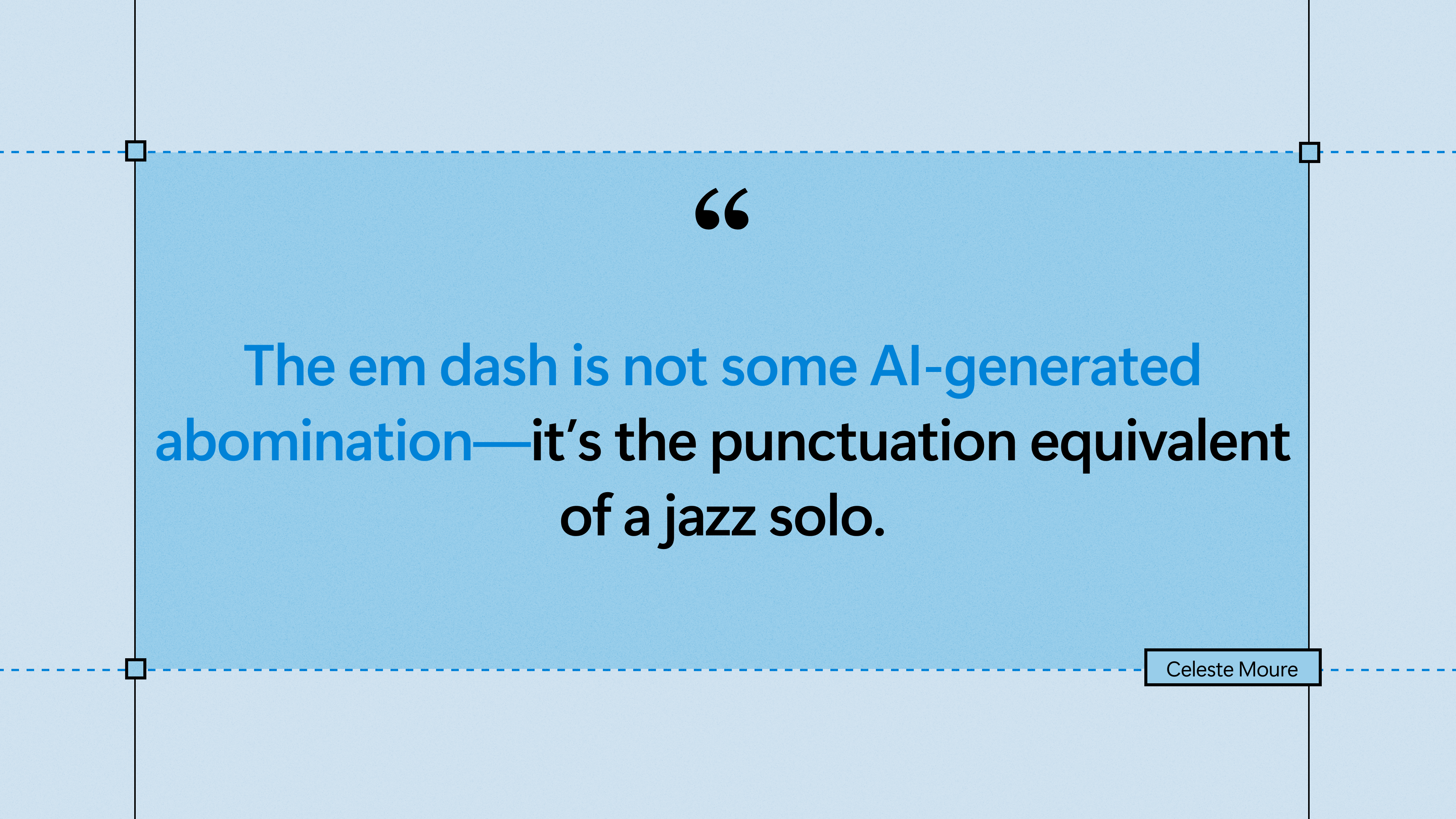The em dash conspiracy: How pop culture declared war on literature’s favorite punctuation
AI, Emily Dickinson, and the War on the Em Dash

Disclaimer: The views and opinions expressed in this essay are those of the author. They do not reflect the official policy or position of Microsoft, nor is this a factual analysis of AI detection.
There’s a new panic sweeping through social media’s bustling marketplace of hot takes, and this time, it’s not about quiet quitting or blockchain resumes. Lurking in the shadows of our emails, our tweets, even our texts, is a punctuation mark so dangerous, so algorithmically suspicious, that its mere presence now triggers corporate witch hunts. That’s right: the em dash—humanity’s oldest dramatic pause—has been outed as genAI’s smoking gun. According to a brigade of self-appointed grammar detectives, if you dare deploy this elegant little line—gasp—you might as well just confess: I am a robot, and my favorite book is the Terms of Service agreement.
The theory goes something like this: If you spot an em dash—especially one nestled between clauses like a grammatical sandwich—you’ve caught a robot red-handed. Real humans, the theory goes, would never deploy such a flamboyant stroke. They prefer the staid comma, the predictable period, the safely corporate semicolon. The em dash? That’s the calling card of AI tools, or some other silicon-based interloper trying to pass itself off as a person who has, at any point, read a book.
This is, of course, absurd—but not for the reasons you might think. Yes, AI does use em dashes (along with every other punctuation mark known to Unicode). But so did Emily Dickinson—she basically treated the em dash as her personal Morse code—and built entire poems out of em dashes: “I’m Nobody! Who are you?—Are you—Nobody—too?” And then there’s Kurt Vonnegut, who once wrote, “Here is a lesson in creative writing. First rule: Do not use semicolons… All they do is show you’ve been to college.” (He was pro-dash.) Vladimir Nabokov used dashes to craft some of the most breathtaking prose of the 20th century. James Joyce, were he alive today, would have been banned from LinkedIn immediately for writing sentences like, “Yes I said yes I will Yes—”
And yet, somewhere between the rise of generative AI and the decline of recreational reading, it’s been decided that the em dash was the linguistic equivalent of a CAPTCHA test. “No human would write like this,” the so-called experts say, as if Herman Melville didn’t once spend 60 pages describing a whale.
The irony, of course, is that many of the people most convinced of the em dash’s inhumanity are least equipped to spot actual AI writing. It can be easy to breeze past a paragraph of flawless corporate jargon—“synergizing scalable paradigms to leverage disruptive innovation”—without suspicion, but the moment a hyphen with delusions of grandeur is spotted, the alarm sounds. It wouldn’t surprise me if em dash critics also believed Moby-Dick could be improved with a few more infographics.
But let’s be clear: the em dash is not some AI-generated abomination—it’s the punctuation equivalent of a jazz solo. It’s for emphasis—for interruption—for the sudden, glorious derailment of a thought. It’s the difference between “I’m fine” and “I’m fine—said the woman who absolutely did not just reorganize her spice drawer at 3 a.m. while listening to Radiohead’s OK Computer on repeat.”

Writers have relied on it for centuries because, unlike the stiff, formal alternatives (looking at you, semicolon), the em dash is alive. It breathes. It gestures wildly.
And yet, the em dash detectives remain undeterred. They’ve moved on from analyzing writing samples to diagnosing entire professions. Journalists? Probably AI—they use too many em dashes. Novelists? Definitely AI—have you seen how long their sentences are? Poets? Don’t even get them started. At this rate, we’ll soon see think pieces arguing that Shakespeare’s use of iambic pentameter was a clear sign he was a primitive chatbot. “To be, or not to be—that is the question.” Yep, classic genAI.
The funniest part of all this is that AI doesn’t even like em dashes. Left to its own devices, genAI prefers clean, frictionless prose—the kind of writing that slides into your brain without leaving a mark. The em dash is messy. It’s human. It’s the punctuation mark you use when you’re thinking out loud—when you’re alive on the page.
So, to the LinkedIn linguists, the AI alarmists, the self-appointed guardians of “authentic” writing: maybe—just maybe—the reason it’s easy to think the em dash is a robot giveaway is that people aren’t reading enough books written by humans.
And that’s the real tragedy here—not the overuse of em dashes, but the underuse of libraries.
Read more
To stay in the know with Microsoft Design, follow us on Twitter and Instagram, or join our Windows or Office Insider program. And if you are interested in working with us at Microsoft, head over to aka.ms/DesignCareers.

Design for cultural diversity: a perspective on global experiences
Designing for diversity isn’t just about accessibility or localization—it’s about building bridges through shared understanding.

Lucid dreaming together with AI
A trip to Sintra that pushed the boundaries of my creativity

